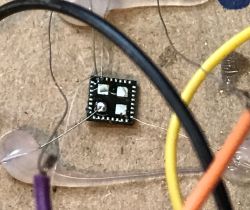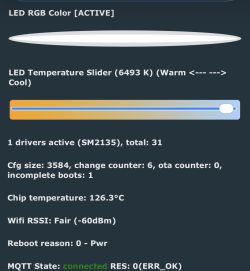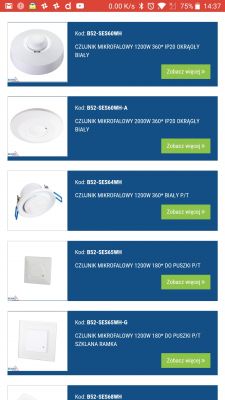I wanted to ask you if the number of fields that the lens mentioned in the topic has has an impact on the sensitivity of the sensor?
I want to know this because in a small room (2x3m) I have made lighting that is switched on when motion is detected. It often happens that despite someone being in the room and moving around in a small area of the room, the sensor does not detect movement and the light goes out. I suspect that the problem may be poor detection resolution, and if so, is the number of fields in the lens responsible for this. The sensor is located in the corner of the room near the ceiling almost above the front door. I tested both the wall and ceiling ones. Both tended to be among the smaller ones with a small lens, as I also care about small dimensions and their concealment.
ORNO OR-CR-211 - identical to this one, but from a different company
ORNO OR-CR-205
ORNO OR-CR-201/W - I also tested a similar one to this one, it came from a demobilised lamp; unfortunately there are no descriptions on it.
The purpose of the sensor is only to control the lighting.
I am planning to test the ORNO OR-CR-222 360st, because as far as I can see, there are definitely more fields in the lens than in the above-mentioned ones. I just need to know whether this will make the sensor detect movement more often.
I want to know this because in a small room (2x3m) I have made lighting that is switched on when motion is detected. It often happens that despite someone being in the room and moving around in a small area of the room, the sensor does not detect movement and the light goes out. I suspect that the problem may be poor detection resolution, and if so, is the number of fields in the lens responsible for this. The sensor is located in the corner of the room near the ceiling almost above the front door. I tested both the wall and ceiling ones. Both tended to be among the smaller ones with a small lens, as I also care about small dimensions and their concealment.
ORNO OR-CR-211 - identical to this one, but from a different company
ORNO OR-CR-205
ORNO OR-CR-201/W - I also tested a similar one to this one, it came from a demobilised lamp; unfortunately there are no descriptions on it.
The purpose of the sensor is only to control the lighting.
I am planning to test the ORNO OR-CR-222 360st, because as far as I can see, there are definitely more fields in the lens than in the above-mentioned ones. I just need to know whether this will make the sensor detect movement more often.






